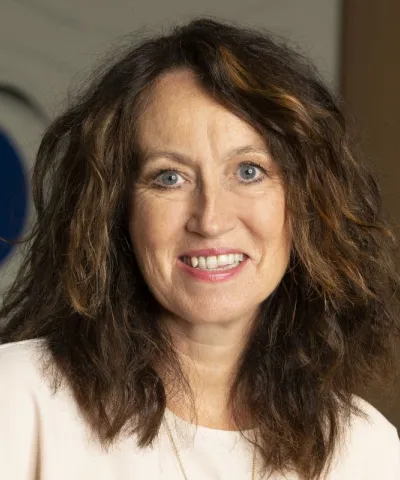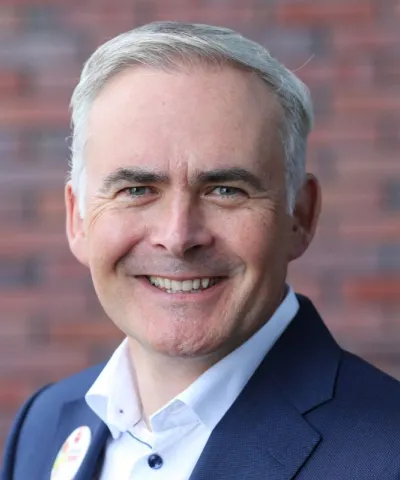Sustainable choices aimed at the new generations as the key to success
The rate of innovation in the electronics market has been high in the past decades. Although the products are often timeless, the industry continuously succeeds improve and innovate. Material consumption plays a major role in this. On the one hand, household appliances are becoming increasingly ‘smarter’ and ‘connected’ but at the same time, a growing group of consumers want electronics that are sustainable and environmentally friendly.
Producers don’t always have direct access to consumers through a complex stream of offline and online partner models. This affects the power of persuasion they can exert. The chain is moving, but can certainly be more sustainable.
We join Henk de Jong, CEO of Philips Domestic Appliances. He takes us along in his vision of sustainability and how consumers play a central role in valorizing it.
What are the key sustainability trends in your industry?
“When I look at consumer electronics, there are three important consumer-driven elements in terms of sustainability. Firstly, consumers increasingly want to know how and where the product is made. There is a greater need for honest, transparent communication about the sustainability of the product line. Secondly, I see customer awareness emerging. In particular, the younger generations are more concerned with sustainability in their purchasing process. This is often one of the three major value drivers. This dichotomy in types of customers means that as a company, you have to offer a choice. Thirdly, I see a broader, more complex topic related to the life cycle of products, namely circularity. To respond to these trends, innovative power within our sector is crucial.”
You say circularity is a complex subject. Do you think making consumer electronics circular is the crucial challenge that needs to be addressed?
“I think the story starts one step ahead of circularity, namely with the lifespan of your product. If you as a company makes a quality product that can last a long time, that’s the most sustainable in my view. I know stories of people who have been using the same mixer for about 40 to 50 years. So the lifespan of a product is also our primary focus.
For example, if a product needs to be replaced or upgraded due to innovation, it’s important to find out if you can close the circle and take the product back into your production process. In our industry, we are very dependent on partners to get those obsolete products back. And there are also costs associated with taking products back. This may be easier to consider for more expensive products, but for household products with a lower one value density, that’s not always achievable.
It may still be a big challenge now, but I do believe this is the future. We therefore need to find out how we can achieve this.”
Is there a growing demand for sustainable products in your own business?
“Yes, take the Senseos made from 75% recycled material, for example. They’re doing great. But realistically, people don’t buy a product like that for that reason alone, sustainability is not the only driver. However, this is the time to respond to the trend in which consumers are much more open to a sustainable product line. If that becomes a success, we will put a stronger focus on it and then I also expect the competitor to adopt this trend.”
“Now is the time to respond to the trend in which consumers are much more open to a sustainable product line”
Do you currently see a big difference within the industry when it comes to sustainable propositions?
“I see a clear difference between branded and non-branded. Just like us, many branded companies are actively involved in sustainability. I do think that consumers realise that the cheaper products are a much less sustainable choice, that’s very intuitive. But they’re still being sold, so there’s still a lot of work for us to do.
“We need to ensure sustainability becomes a consumer need”
I think the crux is making sustainability a consumer need. It’s ‘nice that it’s sustainable’, but it’s not the decisive purchasing factor. To do it really well, you have to move towards a situation where sustainability is one of the top three decision factors for purchasing. You go from a push to a pull factor and that always works better.”
A price difference between competitors is indicative, but shouldn’t the sector also inform consumers better?
“I agree with that. We must work towards a more standard assessment of sustainability. Only if consumers can objectively rely on that will we create a level playing field.
“We must work towards a more standard assessment of sustainability”
This can be done by industry, but there may also be a role for the government. Our home appliance market is strongly international, with a lot of influence on the supply from cheaper markets. That’s a given. As a consumer, you prefer to buy a fridge from a local, trusted supplier, but people don’t mind buying an iron for thirty euros from various online suppliers.
If we are to set up something up, it must transcend countries, for example at European level.”
You indicated earlier that you wanted to respond to an increasing demand for sustainable products. How will that manifest itself in your proposition and pricing?
“In concrete terms, this means we’re going to expand the portfolio with a bio-based breakfast set, consisting of a kettle, a toaster and a coffee machine. The plastic used in the housing comes from frying oil and is therefore 100% bio-based. This frying oil is therefore recycled into new plastic parts. This way, we try to offer an extra choice in our proposition to a growing group of consumers who value sustainability.
The impact on price can be very product specific. For some products, the production costs are now higher, which affects the price. Also, the sustainability impact is relatively greater for one product, which makes it stronger in the value proposition. But I do believe that you can only charge a higher price if the consumer has a higher willingness to pay for it. When consumers see sustainability purely as a hygiene factor, they say: ‘good that it is sustainable, but I don’t want to pay more for it’. That consideration is important for pricing, but so is every bit of value we add to a product.”
“The sustainability impact is relatively greater for one product which makes it stronger in the value proposition”
Is it a conscious choice not to make the entire portfolio bio-based at the same time, but to give the consumer a clear choice?
“In my experience, consumers should be able to make that choice themselves. It’s not up to us to raise them. If you change course too quickly, you will lose consumers and you will still not reach your goal. And that’s quite apart from all production-related challenges.
But that doesn’t release us from the obligation as a company and industry to make investments that reduce our footprint. That’s why we have to make these steps transparent to consumers, so they can follow us in the improvements we make. So I see it as one two-track approach. On the one hand, we do this because we consider it important as a company and it’s anchored in our values. On the other hand, we do it because we want to offer an alternative to consumers with a demand for more sustainable products. Within the second track, we’re pleased there’s a younger generation in particular that has sustainability higher on their list of choices.”
So in that respect, are you aligning your sustainability proposition with the segments that are evolving?
“You could say that. To give a very practical example: take a kettle. What’s important? It has to look good on your kitchen counter, boil water quickly and it must have a filter that keeps the water clean. That’s the basic boiler for most of our customers. In addition, we see a mainly younger generation who say: ‘and this kettle must also be made of bio-based plastic’. That’s why we don’t only sell kettles that are more sustainable. However, the greater the success, the more that’s where we're heading. The real change will therefore come if this trend continues with the younger generation of consumers and they subsequently continue to follow these trends as they get older.”






